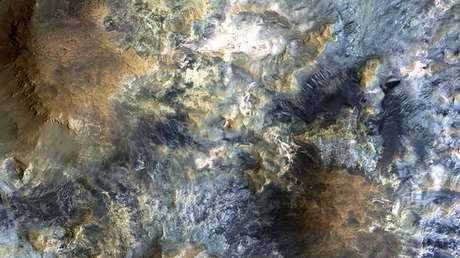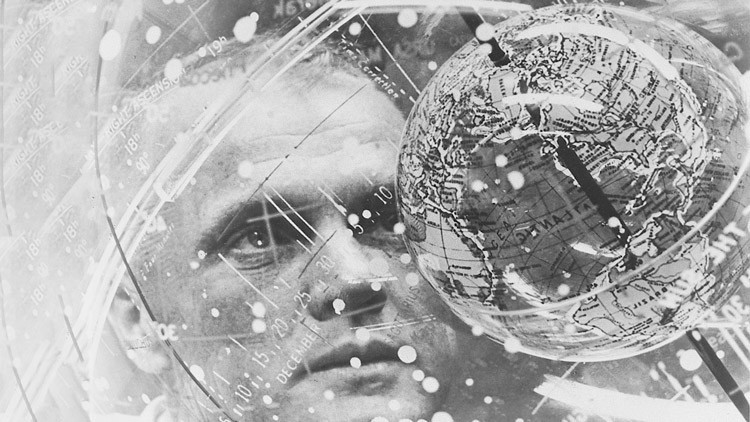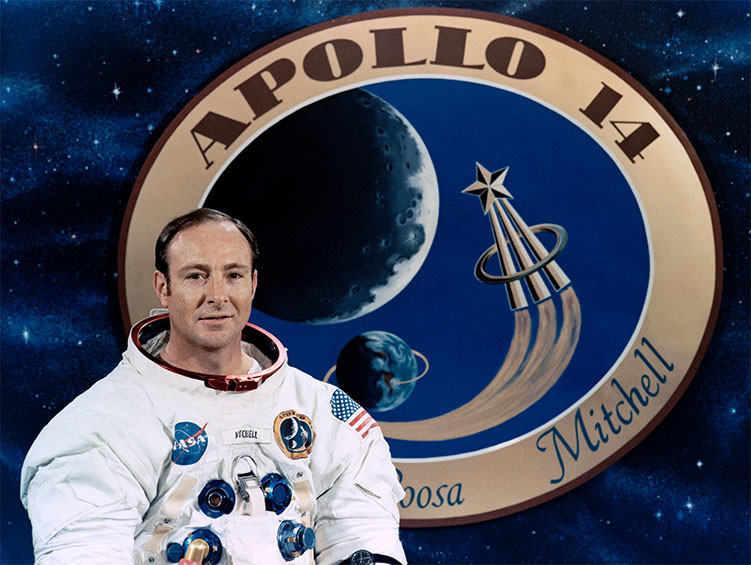
Photos: All about asteroids
Asteroid 2014 JO25 will fly by Earth on April 19, 2017, at a distance of about 1.1 million miles (1.8 million kilometers) or about 4.6 times the distance from Earth to the moon.
Hide Caption
1 of 20

Photos: All about asteroids
This graphic shows asteroid 2016 HO3 orbiting Earth as the pair go around the sun together. The asteroid was first spotted on April 27, 2016, by the Pan-STARRS 1 asteroid survey telescope on Haleakala, Hawaii.
Hide Caption
2 of 20

Photos: All about asteroids
All about asteroids – This graphic shows the track for asteroid 2004 BL86, which flew about 745,000 miles from Earth on January 26, 2015. That's about three times as far away as the moon.
Hide Caption
3 of 20

Photos: All about asteroids
This graphic shows the path Asteroid 2014 RC took as it passed Earth on September 7, 2015. The space rock came within one-tenth the distance from Earth to the moon.
Hide Caption
4 of 20

Photos: All about asteroids
NASA scientists used Earth-based radar to produce these sharp views of the asteroid designated "2014 HQ124" on June 8, 2014. NASA called the images "most detailed radar images of a near-Earth asteroid ever obtained."
Hide Caption
5 of 20

Photos: All about asteroids
The Hubble Space Telescope snapped a series of images on September 10, 2013, revealing a never-before-seen sight: An asteroid that appeared to have six comet-like tails.
Hide Caption
6 of 20

Photos: All about asteroids
A diagram shows the orbit of an asteroid named 2013 TV135 (in blue), which made headlines in September 2013 when it passed close by Earth. The probability of it striking Earth one day stands at 1 in 63,000, and even those odds are fading fast as scientists find out more about the asteroid. It will most likely swing past our planet again in 2032, according to NASA.
Hide Caption
7 of 20

Photos: All about asteroids
Asteroid 2012 DA14 made a record-close pass -- 17,100 miles -- by Earth on February 15, 2013. Most asteroids are made of rocks, but some are metal. They orbit mostly between Jupiter and Mars in the main asteroid belt. Scientists estimate there are tens of thousands of asteroids and when they get close to our planet, they are called near-Earth objects.
Hide Caption
8 of 20

Photos: All about asteroids
Another asteroid, Apophis, got a lot of attention from space scientists and the media when initial calculations indicated a small chance it could hit Earth in 2029 or 2036. NASA scientists have since ruled out an impact, but on April 13, 2029, Apophis, which is about the size of 3½ football fields, will make a close visit -- flying about 19,400 miles (31,300 kilometers) above Earth's surface. The images above were taken by the European Space Agency's Herschel Space Observatory in January 2013.
Hide Caption
9 of 20

Photos: All about asteroids
If you really want to know about asteroids, you need to see one up close. NASA did just that. A spacecraft called NEAR-Shoemaker, named in honor of planetary scientist Gene Shoemaker, was the first probe to touch down on an asteroid, landing on the asteroid Eros on February 12, 2001. This image was taken on February 14, 2000, just after the probe began orbiting Eros.
Hide Caption
10 of 20

Photos: All about asteroids
The first asteroid to be identified, 1 Ceres, was discovered January 1, 1801, by Giuseppe Piazzi in Palermo, Sicily. But is Ceres just another asteroid? Observations by NASA's Hubble Space Telescope show that Ceres has a lot in common with planets like Earth. It's almost round and it may have a lot of pure water ice beneath its surface. Ceres is about 606 by 565 miles (975 by 909 kilometers) in size and scientists say it may be more accurate to call it a mini-planet. NASA's Dawn spacecraft is on its way to Ceres to investigate. The spacecraft is 35 million miles (57 million kilometers) from Ceres and 179 million miles (288 million kilometers) from Earth. The photo on the left was taken by Keck Observatory, Mauna Kea, Hawaii. The image on the right was taken by the Hubble Space Telescope.
Hide Caption
11 of 20

Photos: All about asteroids
One big space rock got upgraded recently. This image of Vesta was taken by the Dawn spacecraft, which is on its way to Ceres. In 2012, scientists said data from the spacecraft show Vesta is more like a planet than an asteroid and so Vesta is now considered a protoplanet.
Hide Caption
12 of 20

Photos: All about asteroids
The three-mile long (4.8-kilometer) asteroid Toutatis flew about 4.3 million miles (6.9 million kilometers) from Earth on December 12, 2012. NASA scientists used radar images to make a short movie.
Hide Caption
13 of 20

Photos: All about asteroids
Asteroids have hit Earth many times. It's hard to get an exact count because erosion has wiped away much of the evidence. The mile-wide Meteor Crater in Arizona, seen above, was created by a small asteroid that hit about 50,000 years ago, NASA says. Other famous impact craters on Earth include Manicouagan in Quebec, Canada; Sudbury in Ontario, Canada; Ries Crater in Germany, and Chicxulub on the Yucatan coast in Mexico.
Hide Caption
14 of 20

Photos: All about asteroids
NASA scientists say the impact of an asteroid or comet several hundred million years ago created the Aorounga crater in the Sahara Desert of northern Chad. The crater has a diameter of about 10.5 miles (17 kilometers). This image was taken by the Space Shuttle Endeavour in 1994.
Hide Caption
15 of 20

Photos: All about asteroids
In 1908 in Tunguska, Siberia, scientists theorize an asteroid flattened about 750 square miles (1,200 square kilometers) of forest in and around the Podkamennaya Tunguska River in what is now Krasnoyarsk Krai, Russia.
Hide Caption
16 of 20

Photos: All about asteroids
What else is up there? Is anyone watching? NASA'sNear-Earth Object Program is trying to track down all asteroids and comets that could threaten Earth. NASA says 9,672 near-Earth objects have been discovered as of February 5, 2013. Of these, 1,374 have been classified as Potentially Hazardous Asteroids, or objects that could one day threaten Earth.
Hide Caption
17 of 20

Photos: All about asteroids
One of the top asteroid-tracking scientists is Don Yeomans at the Jet Propulsion Laboratory, which is managed by the California Institute of Technology. Yeomans says every day, "Earth is pummeled by more than 100 tons of material that spewed off asteroids and comets." Fortunately, most of the asteroid trash is tiny and it burns up when it hits the atmosphere, creating meteors, or shooting stars. Yeomans says it's very rare for big chunks of space litter to hit Earth's surface. Those chunks are called meteorites.
Hide Caption
18 of 20

Photos: All about asteroids
Asteroids and comets are popular fodder for Earth-ending science fiction movies. Two of the biggest blockbusters came out in 1998: "Deep Impact" and "Armageddon." (Walt Disney Studios) Others include "Meteorites!" (1998), "Doomsday Rock" (1997), "Asteroid" (1997), "Meteor" (1979), and "A Fire in the Sky" (1978). Can you name others?
Hide Caption
19 of 20

Photos: All about asteroids
Asteroid 1998 QE2 is about 3.75 million miles from Earth. The white dot is the moon, or satellite, orbiting the asteroid.
Hide Caption
20 of 20




















Story highlights
The asteroid is about the length of six NFL football fieldsNASA: No, it won't hit us
(CNN)A large asteroid is whizzing by Earth this week, and NASA has the images to prove it.
The space rock, known by the very dull name of 2014 JO25, was expected to safely fly by Earth on Wednesday night, according to NASA.
Radar images obtained by NASA a day earlier show a peanut-shaped asteroid that rotates about once every five hours.
"Although there is no possibility for the asteroid to collide with our planet, this will be a very close approach for an asteroid of this size," the space agency said in a statement.
What size are we talking about?
Measurements indicate the asteroid is about 2,000 feet (650 meters) in size. That's 670 yards (613 meters), or about the length of six NFL football fields.
Asteroid 2014 JO25 will safely pass Earth tomorrow. We viewed it w/ radar data today, from 1.9 million miles away.https://t.co/FPICdrj26M pic.twitter.com/5CyL35W7gz
— Asteroid Watch (@AsteroidWatch) April 19, 2017
And how close is "very close"?
This rock will come about 1.1 million miles (1.8 million kilometers) from Earth, NASA says. That's about 4.6 times the distance from Earth to the moon. The moon, by the way, is about 239,000 miles (384,400 kilometers) from Earth.
While several small asteroids pass within this distance of Earth a few times a week, this is the closest by any known asteroid of this size or bigger in 13 years -- since asteroid Toutatis in 2004.
Can you see 2014 JO25? Well, maybe. This asteroid has a reflective surface and you might be able to see it with a telescope.
"The asteroid will approach Earth from the direction of the sun and will become visible in the night sky after April 19," NASA said.
If you don't have your own telescope, you canwatch the asteroid online.
Astronomers discovered 2014 J025 in ... you guessed it ... 2014. This will be its closest encounter with Earth for the last 400 years. NASA said telescopes around the world will be trained on it during the flyby to try to learn more about it.
Additional radar observations Thursday and Friday will hopefully provide better images, NASA said.
There was no word early Thursday on whether the space rock had whizzed past Earth.

 Estas imágenes del valle más grande de Marte le dejarán sin aliento
Estas imágenes del valle más grande de Marte le dejarán sin aliento





